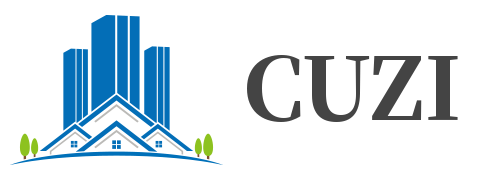Moisture-resistant MDF is an advanced version of regular medium-density fiberboard (MDF), specifically designed to enhance its stability in wet conditions. By using waterproof adhesives, wax coatings or adding chemicals (such as paraffin, silicates, etc.), this board significantly reduces its rate of water absorption and expansion, making it ideal for scenes with high humidity or possible short-term contact with moisture. Although the density of moisture-resistant MDF is similar to traditional MDF, approximately 680-800 kg/m³, it provides superior moisture resistance, ensuring long-term durability and stability in wet conditions.
Moisture resistant MDF grade classification
According to the moisture-resistant performance and applicable scenarios of the board, Moisture resistant MDF are mainly divided into two categories:
- Moisture Resistant MDF
Applicable scenarios: Suitable for kitchens, bathroom cabinets and other humid areas indoors.
Performance characteristics: Designed to resist humidity changes in a short period of time, such as steam or a small amount of splashing water. Not suitable for long-term direct contact with moisture or immersion.
Industry standards: Meet European EN 622-5 or American ASTM D1037 standards to ensure stability under certain humidity conditions. - Waterproof MDF
Applicable scenarios: Recommended for laboratory countertops, outdoor semi-sheltered areas (such as balcony cabinets) and other places with higher requirements for water resistance.
Performance characteristics: By adding a higher proportion of water-repellent, the water resistance of the material is enhanced, and it can withstand intermittent rain without compromising structural integrity. Rigorous testing has been carried out to verify its durability in humid environments.
Performance standard: It must pass a 24-hour water immersion test, and the water absorption expansion rate must be less than 15%, ensuring that it can maintain good dimensional stability and strength even after being exposed to water for a long time.
Core features of Moisture-resistant MDF
Advantages
Moisture-proof and mildew-proof: not easy to deform or mold in an environment with humidity below 80%. Moisture-resistant MDF improves the water resistance and stability of the board by adding waterproofing agent or other treatment methods, reducing the risk of moisture absorption and expansion.
High stability: more resistant to temperature changes than ordinary MDF, suitable for humid climate areas.
Easy processing: Moisture-resistant MDF maintains the processing characteristics of traditional density board such as easy cutting, drilling, carving, etc and is suitable for various complex modeling needs.
Environmental protection: Modern Moisture-resistant MDF mostly uses environmentally friendly adhesives, which reduces the release of harmful substances such as formaldehyde and has little impact on indoor air quality.
Disadvantages
Higher cost: Due to the more complex production process and the use of more advanced materials (such as waterproofing agent), the price is 20%-50% higher than ordinary MDF.
Increased weight: The board is slightly heavier due to the addition of waterproofing agent. Compared with some other types of boards, such as particleboard or solid wood board, Moisture-resistant MDF is heavier, which may affect the transportation cost and installation difficulty.
Not suitable for long-term soaking in water: it is still a “moisture-proof” rather than “waterproof” material.
Edges are easy to absorb moisture: Even if the overall moisture-proof performance has been improved, if the edge sealing is not done properly, the edge of the board is still easy to absorb moisture, thus affecting the overall service life.
Main application scenarios
Kitchen and bathroom: cabinets, bathroom cabinets, mirror cabinet substrates.
Commercial space: The interior decoration of public places such as hotels, restaurants, shopping malls, etc also often uses high-performance Moisture-resistant MDF, because they can not only meet the needs of complex environments, but also be customized according to different design styles.
Outdoor semi-sheltered areas: balcony storage cabinets, garden furniture (need to be matched with waterproof coating).
Special environment: laboratory countertops, swimming pool locker room furniture.
FAQ
Q1: Can Moisture-resistant MDF be completely waterproof?
No! Moisture-resistant MDF can only withstand short-term humid environment, and long-term soaking in water will still damage it. If you need to be completely waterproof, you should choose HPL high-pressure laminate or WPC wood-plastic composite material.
Q2: What is the price difference between Moisture-resistant MDF and ordinary MDF?
The price difference in the domestic market is about 30%-50% (for example: ordinary 18mm MDF is about 80 yuan/sheet, and moisture-proof type is about 120 yuan/sheet).
Q3: How to judge the quality of Moisture-resistant MDF?
Answer: Good quality Moisture-resistant MDF should have the following characteristics: environmental performance meets the standard, internal particles are small and uniform, and moisture-proof performance is strong. You can confirm its quality by checking the product inspection report and environmental protection mark, or you can observe the water absorption of the board through a simple water immersion experiment.
Q4: Is Moisture-resistant MDF environmentally friendly?
Moisture proof performance has nothing to do with environmental protection, and formaldehyde emission level needs to be paid attention to separately (E0 grade or NAF formaldehyde-free board is preferred).
Q5: Reasons for not being moisture-resistant?
MDF is composed of wood fibers and adhesives, which are easy to absorb moisture and expand in a humid environment. Adhesives may lose some of their stickiness under humid conditions, affecting the structural stability of the board. Long-term exposure to a humid environment will cause the MDF to deform, mold, and may accelerate the aging process.
Q6: What is the difference between MDF and particleboard?
Raw materials: MDF uses fibers, particleboard uses wood chips;
Density: MDF is denser and particleboard is lighter;
Uses: MDF is suitable for fine processing, and particleboard is used in low-load-bearing scenarios.
Q7: Can MDF be used outdoors?
Ordinary MDF is not suitable for outdoor use, and outdoor-grade moisture-proof MDF (higher price) must be selected.
Q8: How can MDF avoid formaldehyde hazards?
Purchase low-formaldehyde certified products, keep ventilation after installation, or use an air purifier.
